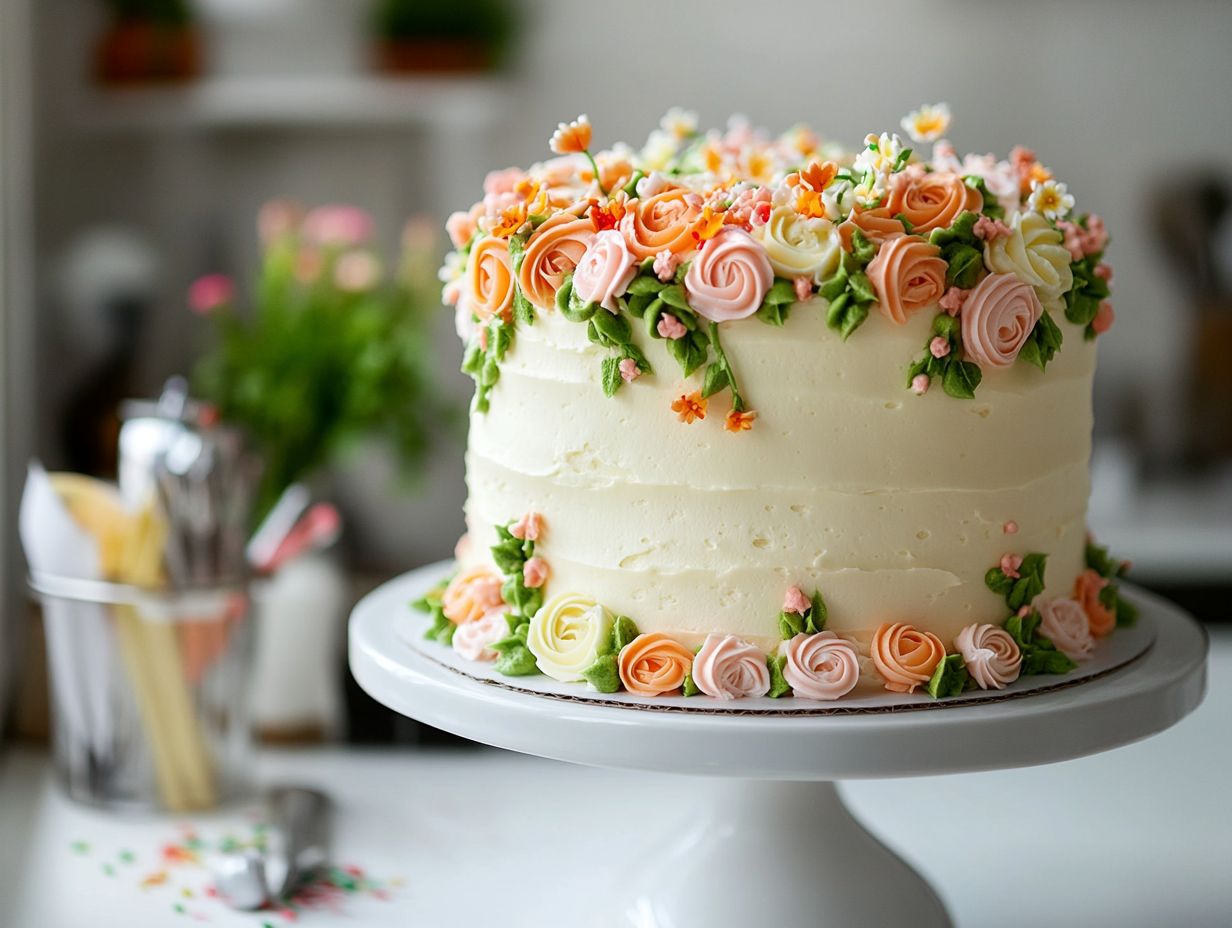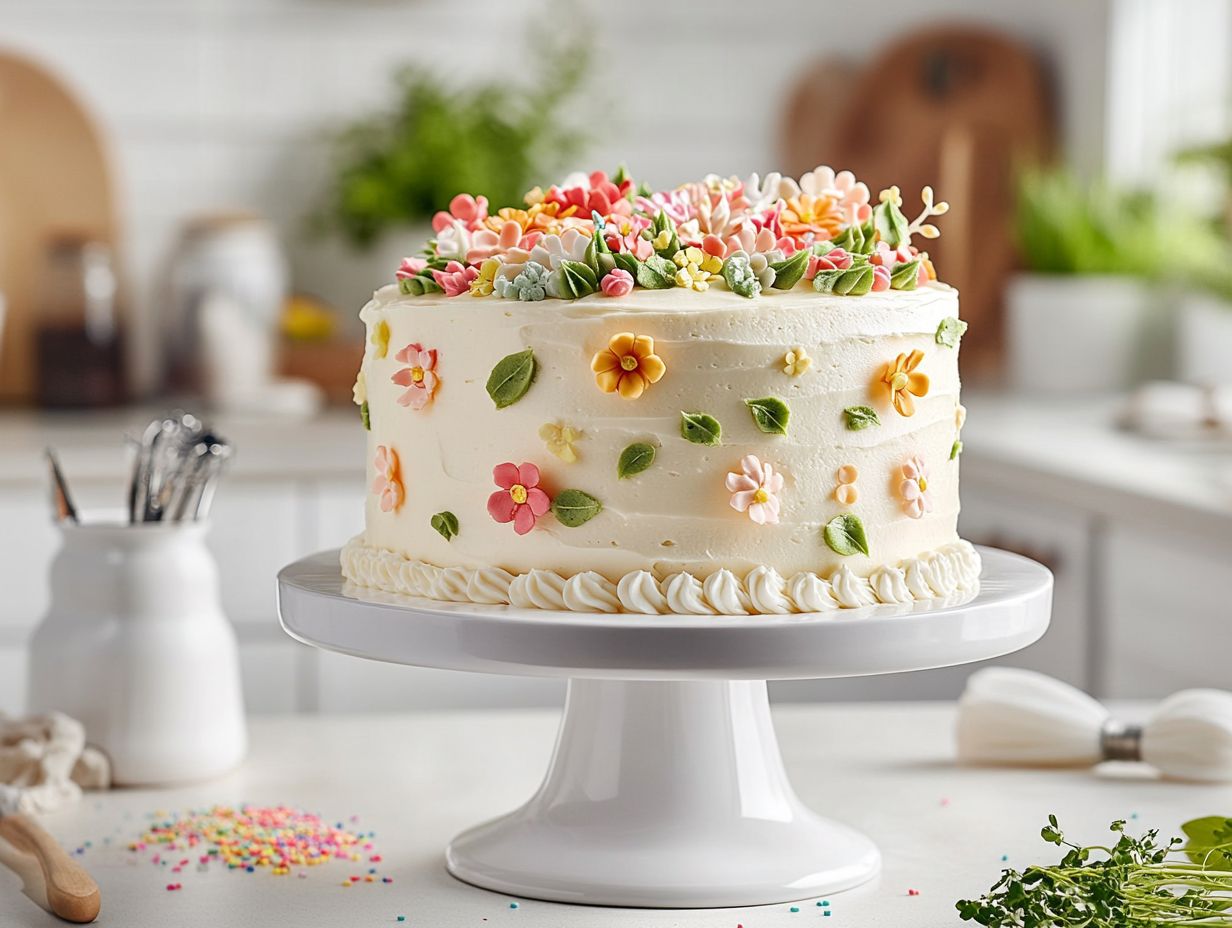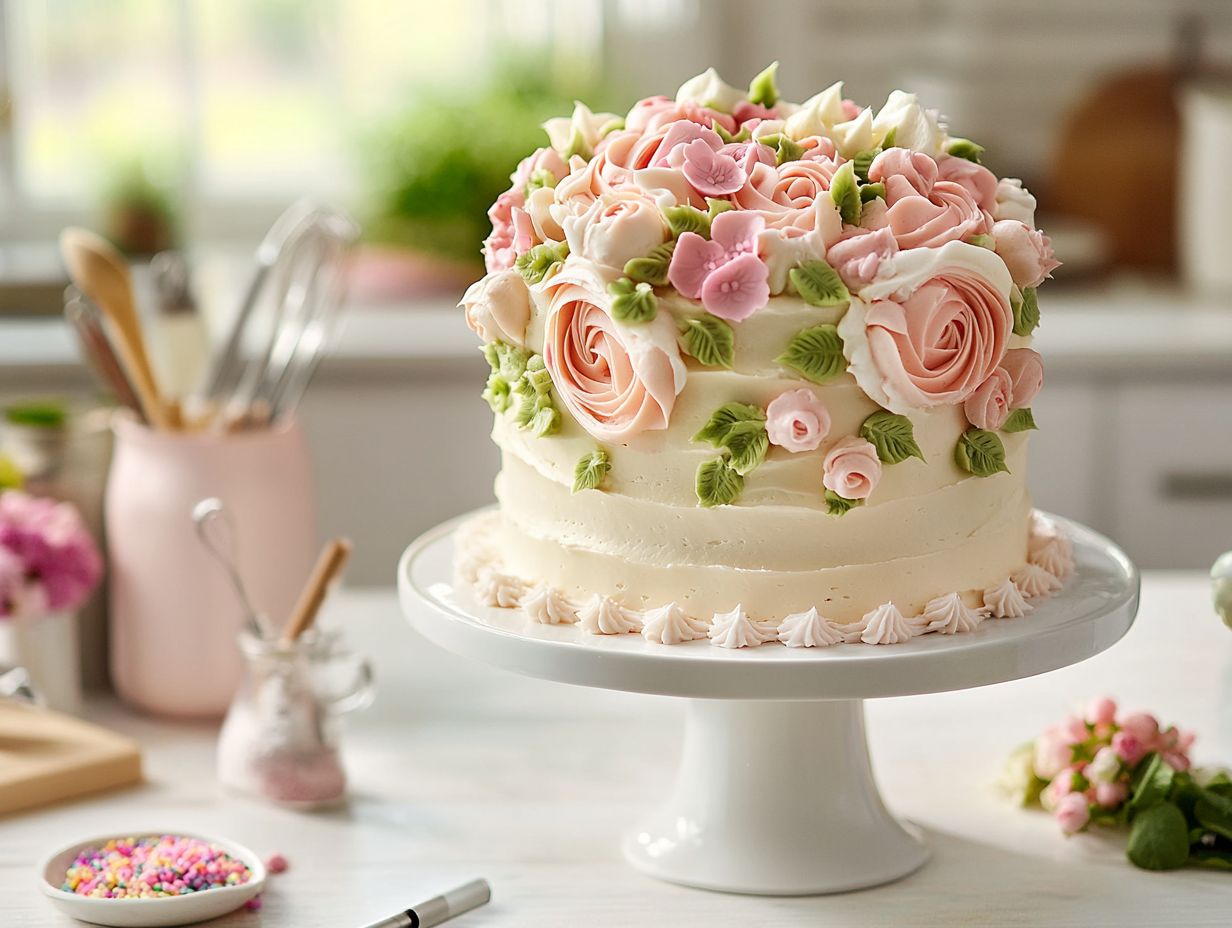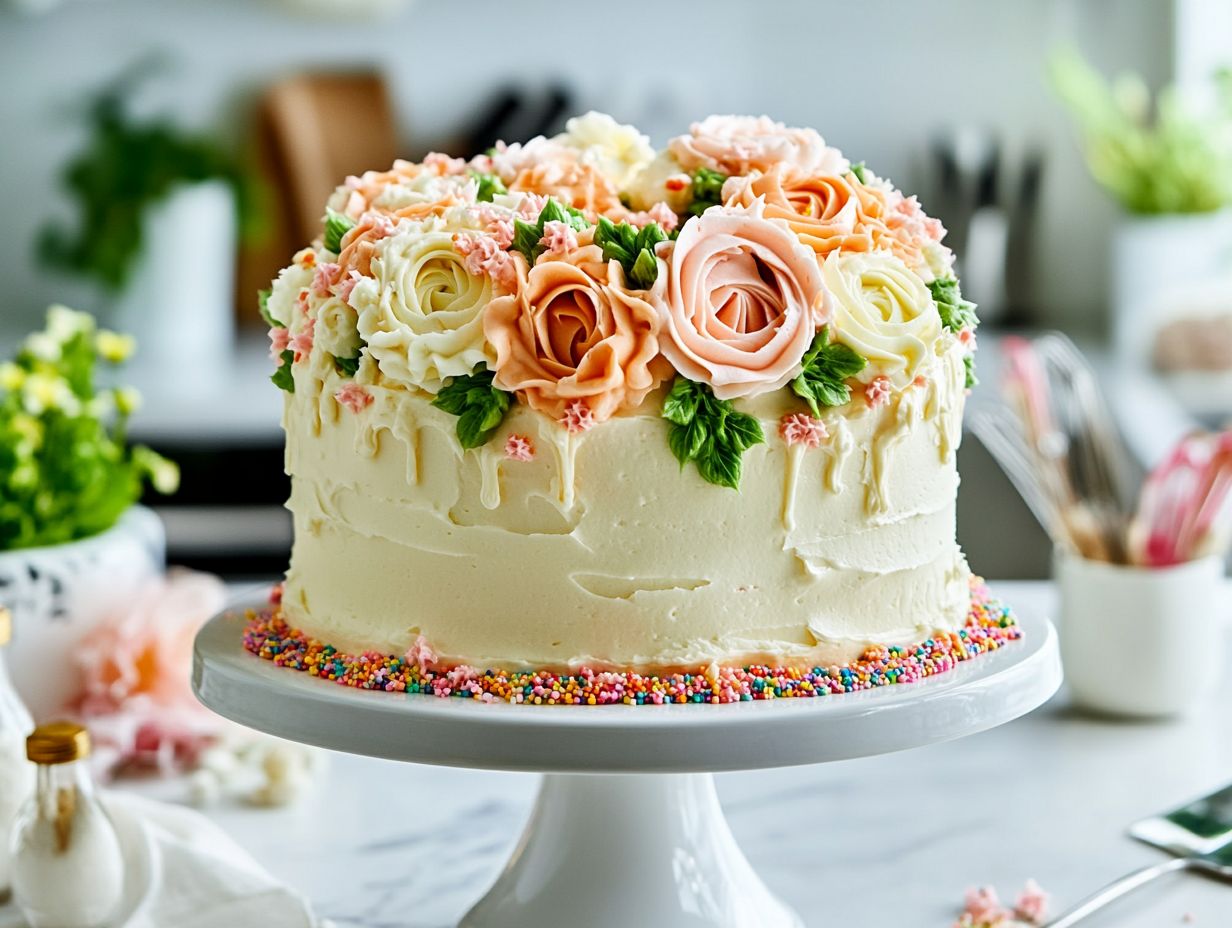Easy cake decorating tips for beginners
Decorating a cake can seem daunting, but it’s easier than you might think! This guide is packed with straightforward tips and techniques to help beginners create beautiful, mouthwatering cakes.
From essential tools and types of frosting to simple decorating methods and creative toppings, you’ll find everything you need to transform your baked goods into stunning centerpieces.
Whether you want to impress at a party or indulge your creative side, these easy cake decorating tips will guide you every step of the way.
Table of Contents

In today’s fast-paced digital era, comprehending the intricacies of effective communication has become increasingly essential. The ability to convey messages clearly and persuasively can significantly impact both personal and professional interactions.
This article will examine the fundamental aspects of communication skills, providing practical insights and strategies to enhance these competencies. Readers can anticipate exploring various sections, including the principles of verbal and non-verbal communication, techniques for active listening, and methods for effectively tailoring messages for diverse audiences.
Additionally, the article will address common barriers to communication and strategies for overcoming them, as well as the influence of technology on contemporary interactions. Ultimately, the objective is to equip individuals with the necessary tools to foster meaningful connections and ensure that their messages resonate effectively.
Essential Cake Decorating Supplies
Embarking on a cake decorating journey necessitates the acquisition of essential supplies, as these tools are vital for executing various techniques and achieving aesthetically pleasing results.
Key supplies include high-quality buttercream icing for frosting, fondant for detailed decorations, and a diverse array of decorating tools, such as piping bags, spatulas, and cake tips, which facilitate the creation of impressive designs with ease.
Investing in these fundamental items will not only enhance one’s decorating skills but also foster creativity, enabling the exploration of different cake concepts and decoration styles.
Basic Tools Every Beginner Needs
Every beginner in cake decorating should acquire a fundamental set of tools that are essential for producing beautifully decorated cakes. This collection should include piping bags, spatulas, and various cake supply items. These tools will not only streamline the decorating process but also allow individuals to explore different techniques and styles with greater ease.
For example, piping bags can be utilized to apply buttercream icing in intricate designs, while spatulas are ideal for smoothing frosting and achieving a professional finish.
Additionally, a set of cake decorating tips is essential, as they are available in a variety of shapes and sizes, enabling the creation of everything from rosettes to fine lines, thereby providing opportunities for endless creativity. A turntable can further facilitate the decorating process by offering 360-degree access to the cake, ensuring an even application of fondant or icing.
Moreover, utilizing a cake leveler guarantees that each layer is perfectly even, enhancing both stability and visual appeal. The combination of these essential tools not only simplifies the decorating process but also significantly enhances the final presentation, inviting greater admiration from friends and family.
Types of Frosting and Icing
Understanding the various types of frosting and icing is essential for individuals beginning their journey in cake decorating, as each type presents unique textures, flavors, and decorating possibilities.
Buttercream icing is a widely favored option due to its versatility and ease of application, enabling bakers to achieve beautifully frosted cakes or intricate decorations. Fondant, on the other hand, provides a smooth and elegant finish, allowing for molding into various shapes, making it particularly suitable for themed creations and special occasions.
Plus these, there are numerous other frosting options worthy of consideration.
- Cream cheese frosting, for example, imparts a tangy flavor that complements carrot and red velvet cakes exceptionally well.
- Royal icing, recognized for its hard-drying properties, is ideal for intricate piping work and the creation of delicate decorations such as flowers and lace.
- Additionally, ganache, composed of chocolate and cream, offers a rich and glossy finish that can either be poured over cakes or whipped to achieve a fluffy texture suitable for filling layers.
By comprehending these various types of frosting and icing, bakers can select the most appropriate options to enhance their creations, ensuring that each cake is not only delicious but also visually captivating.
How to Prepare a Cake for Decorating

Preparing a cake for decoration is a critical step that can greatly influence both the appearance and flavor of the final product. To ensure that your cake is adequately prepared for decorating, begin with a straightforward cake recipe that yields a moist and flavorful foundation, such as a classic vanilla or chocolate cake. Once the cake is baked, allow it to cool completely, and then level the top to create an even surface, facilitating the application of buttercream icing or fondant decorations.
This initial cooling period is essential, as it not only prevents the melting or running of the icing but also aids in locking in moisture, ensuring that each bite remains tender. After leveling, it is advisable to apply a crumb coat, which is a thin layer of icing intended to seal in any loose crumbs. This technique is vital for achieving a smooth finish and establishes an ideal canvas for the final layer of frosting.
It is important to allow the crumb coat to set in the refrigerator briefly before proceeding to the more decorative elements of your cake, as this foundational work prepares the basis for a beautifully decorated masterpiece.
Simple Techniques for Cake Decorating
Mastering fundamental techniques for cake decorating is essential for beginners, as these foundational skills facilitate the creation of aesthetically pleasing cake designs with confidence and precision.
Techniques such as employing piping bags for intricate buttercream designs and applying fondant flowers can significantly enhance the visual appeal of a cake, thereby impressing guests.
Through consistent practice of these techniques, individuals can cultivate a comprehensive repertoire of cake decorating skills, enabling them to undertake more complex designs in the future.
Using Piping Bags and Tips
Piping bags and tips are essential tools in the field of cake decorating, as they facilitate the creation of intricate designs and patterns with buttercream icing. By selecting the appropriate cake tips, one can achieve a wide range of effects, from simple borders to elaborate rosettes, thereby imparting a professional finish to the cakes. Mastery of piping bag techniques allows decorators to express their creativity while exploring various styles.
When utilizing piping bags, it is essential to fill them correctly. Begin by folding down the top edges of the bag to maintain cleanliness on the exterior. Subsequently, use a spatula to fill the bag with icing, ensuring to leave approximately an inch of space at the top for ease of handling.
After filling, it is important to expel any trapped air and twist the bag closed to maintain optimal control.
Popular techniques include the shell border, which can be achieved using a star tip, as well as the smooth swirl of a rose, best executed with a petal tip. By practicing these methods, decorators can enhance their creations with distinctive designs, thereby adding a unique personality to each cake.
Spatula Techniques
Mastering spatula techniques is essential for beginners in cake decorating, as these methods provide the foundational skills necessary for achieving smooth frosting and a polished finish. By utilizing either a straight or offset spatula, one can apply an even layer of buttercream icing, resulting in a clean and professional appearance. This technique is applicable to both simple cakes and more elaborate designs, ensuring that the cake presents beautifully from all angles.
A thorough understanding of the nuances associated with each type of spatula can significantly enhance one’s baking skills. For example, the offset spatula is particularly advantageous for spreading frosting on the top and sides of layered cakes, as it allows for improved control and precision. To begin, one should place a generous amount of icing on the cake and use the offset spatula to spread the icing toward the edges, creating a smooth and even coat.
For those interested in crafting intricate designs, a fan or palette knife can also be beneficial, as these tools facilitate the addition of texture or decorative swirls. It is important to remember that practice is key, and experimenting with these techniques will undoubtedly improve one’s decorating abilities while yielding visually stunning results.
Using Fondant for Beginners

Utilizing fondant for cake decoration may appear daunting for beginners; however, with a few straightforward techniques, one can create exquisite fondant decorations that enhance the overall appearance of a cake. Fondant provides a smooth and sophisticated finish, enabling users to cover cakes or craft intricate designs such as flowers and figurines. By practicing fundamental fondant techniques, individuals will soon develop greater confidence and proficiency in producing remarkable cake decorations that will impress their guests.
To commence, it is essential to have the appropriate fondant tools at hand, including a rolling pin, fondant smoother, and precise cutting tools. Begin by kneading the fondant to achieve a pliable consistency, followed by rolling it out to the desired thickness. Carefully cut the rolled fondant into shapes that align with your design, whether for covering a tiered cake or creating decorative elements.
Applying the fondant smoothly onto the cake is imperative; therefore, utilizing a cake board or turntable can facilitate this process. It is important to remember that practice is essential, and one should feel encouraged to experiment with various colors and textures to ensure each cake is distinctive.
Decorating with Fresh Flowers
Decorating cakes with fresh flowers is a sophisticated and elegant method to enhance cake design, providing a natural and vibrant touch. Fresh flowers can serve as striking edible adornments that complement the flavors and colors of the cake, making them ideal for significant occasions such as weddings, birthdays, and holidays. When utilizing fresh flowers for cake decoration, it is crucial to ensure that they are pesticide-free and safe for consumption.
Furthermore, selecting the appropriate flowers can significantly impact the overall aesthetic of the cake. Classic options such as roses, peonies, or lavender can impart a romantic ambiance, while bold blooms like sunflowers or anemones can offer a more vibrant and eye-catching effect.
Before placing the flowers on the cake, it is advisable to wash them gently and trim the stems to the desired length, ensuring they integrate seamlessly among the layers. Arranging the flowers in clusters or cascading them down the sides can create a visually striking impact, enhancing the cake with color and texture.
Creative Toppings and Decorations
Exploring innovative toppings and decorations can elevate a cake from a basic creation to an extraordinary centerpiece, enabling personal customization and catering to diverse tastes.
Options such as cake balls, chocolate embellishments, and candy decorations offer a myriad of possibilities for enhancing texture, color, and flavor.
By integrating distinctive topping ideas, one can ensure that their cakes make a memorable impression at celebrations and special events.
Candies and Chocolates
Candies and chocolates serve as versatile and appealing options for cake decorating, offering vibrant colors and flavors that attract both children and adults. Utilizing chocolate shavings, candy melts, or chocolate decorations can result in striking designs while adding an indulgent touch to cakes. By incorporating these sweet elements into cake designs, one can enhance the overall presentation while satisfying the sweet preferences of guests.
To commence, it is advisable to consider the use of colorful sprinkles or chocolate-coated candies, such as M&M’s or Skittles, to introduce texture and a playful aesthetic to the creations. Techniques such as melting chocolates for drizzling or employing molds to form unique shapes can further improve the visual appeal of the cake. The incorporation of elements like licorice laces for borders or gummy candies as decorative embellishments can create captivating focal points.
Additionally, integrating a variety of chocolate types, including dark, milk, or white chocolate, allows for interesting contrasts that not only fulfill aesthetic requirements but also cater to diverse flavor preferences.
Fresh Fruits

Fresh fruits not only enhance the visual appeal of cakes but also provide a delightful and natural complement to their flavors. Decorating with fresh fruits can range from the simple placement of berries atop buttercream icing to creating intricate fruit arrangements that serve as stunning centerpieces. Utilizing fruits as edible decorations is an excellent way to highlight seasonal produce while achieving visually captivating designs.
Incorporating fruits such as strawberries, kiwis, or peaches can significantly enhance both the aesthetic and flavor profile of the dessert. An innovative technique involves slicing fruits into decorative shapes and layering them to create a three-dimensional effect. Additionally, garnishes like mint leaves can be employed to introduce a refreshing contrast against the vibrant colors of the fruits.
Employing fruits in various forms, including fruit purees or candied fruit slices, introduces unique textures and flavors, thereby elevating the overall cake experience. By implementing these methods, bakers can transform ordinary cakes into exquisite works of art that celebrate both the beauty and nutritional benefits of nature’s offerings.
Sprinkles and Edible Decorations
Sprinkles and edible decorations serve as an effective and straightforward method to enhance cake designs, making them suitable for various occasions, including parties, holidays, and celebrations. Available in a wide range of colors, shapes, and sizes, sprinkles can significantly elevate the visual appeal of cakes while remaining easy to apply. From classic rainbow sprinkles to themed decorations, incorporating a whimsical element can render any cake a delightful centerpiece that appeals to guests of all ages.
Plus traditional rainbow sprinkles, one may also consider the incorporation of chocolate chips, nonpareils, or edible glitter to create intricate patterns and textures. For a seasonal touch, holiday-themed sprinkles in the shapes of stars, hearts, or Halloween ghosts can transform a cake into a focal point worthy of admiration.
When applying these decorations, it is advisable to do so while the frosting remains wet, as this facilitates better adherence. Layering different types of sprinkles can yield visually stunning effects, such as a vibrant ombre appearance. Additionally, incorporating candy pieces or fruit-shaped sprinkles can add an extra dimension of creativity and surprise in each slice.
Final Touches: How to Present Your Cake
Presenting a cake with elegance is as crucial as its decoration, as an appealing display significantly enhances the overall experience for guests. Employing simple techniques, such as utilizing decorative cake stands, adding fresh flowers, or incorporating themed decorations, can elevate the presentation of the cake to a sophisticated level. By carefully considering the aesthetics of the cake display, one can create a visually compelling centerpiece that captures the attention of attendees at any gathering.
To achieve an impressive presentation, meticulous attention to detail is essential. Coordinating the cake’s color palette with the surrounding décor can create a harmonious appearance that is visually appealing. For instance, if the cake features pastel colors, selecting a soft-toned tablecloth and complementary decorations can further enhance its beauty.
Additionally, incorporating varying heights within the display by utilizing pedestals or tiered stands adds dimension and guides the eye upward. Decorative elements such as ribbons, candles, or themed props not only provide depth but also reinforce the event’s overarching theme, ensuring that the cake remains the focal point of the celebration.
Common Mistakes to Avoid in Cake Decorating
As individuals embark on their cake decorating journey, it is essential to be aware of common mistakes frequently made by beginners, as these missteps can impede progress and undermine confidence. Avoiding pitfalls such as failing to allow the cake to cool adequately, overloading decorations with excessive elements, and neglecting to practice fundamental techniques can lead to more successful decorating experiences.
By learning to identify these common errors, one can enhance their skills and create aesthetically pleasing cakes with greater ease.
One significant challenge that many novice decorators face is the use of inappropriate tools or materials. Utilizing low-quality frosting or lacking the correct piping tips can substantially affect the cake’s visual appeal. Inability to achieve a smooth finish may result in considerable disappointment.
To mitigate these issues, it is advisable to invest in high-quality tools and practice techniques such as crumb coating to attain a professional-looking exterior. It is important to remember that simplicity often yields superior results; minimalistic design can create striking visual appeal without overwhelming the cake’s overall aesthetic.
By implementing these strategies, beginners can progress confidently in their cake decorating skills.